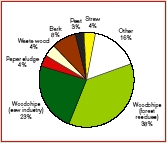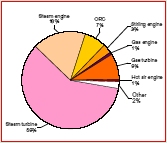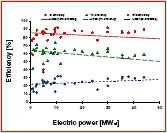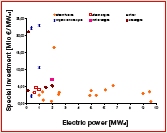About 90 commercial CHP plants with solid biomass already exist in Europe, whereas the other 70 plants are demonstration, pilot or testing plants. Most solid biomass CHP plants are located in countries of considerable forest industry (Figure 1, Figure 2).

Figure 1: Number of biomass CHP plants in the considered countries

Figure 2: Installed capacity of considered biomass CHP plants, left [50 MWel; right [ 5 MWel
The main solid biomass fuels are wood chips from forest residues and from industrial residues (Figure 3). The most dominating CHP technology are steam based systems: steam turbine and steam engine (Figure 4).


3: Kind of biomass fuel of CHP plants Figure 4: Technologies of CHP plants
In addition there are some outstanding examples for successfully proven innovative CHP systems like Organic Rankine cycle, gasification with gas engine and gas turbine as well as Stirling engine. The electric efficiency is between 6% up to 37%, where the total fuel efficiency is between 70 to 92% (Figure 5). The specific investment costs for steam cycle based technologies are in the range of 5 to 8 Mio €/MWel (Figure 6).


Figure 5: Efficiencies of CHP plants Figure 6: Specific investment costs of CHP plants ([10 MWel )
Conclusions
In Europe there are already many successfully operating CHP plants with solid biomass on a high common technical level based on steam cycle technologies. New innovative CHP technologies like ORC, gasification are already demonstrated successfully on commercial level. Main future trends must lead to a further decrease of the investment costs to further stimulate activities in the field of CHP plants to support highly sustainable development of the European electricity and heat system.
Source
Mitteilung von Gerfried Jungmeier (Joanneum Research) vom 2004-06-28.
Share
Renewable Carbon News – Daily Newsletter
Subscribe to our daily email newsletter – the world's leading newsletter on renewable materials and chemicals









